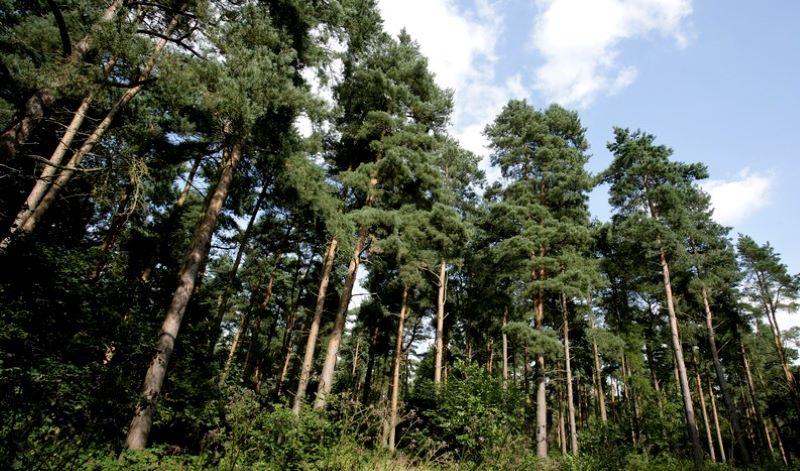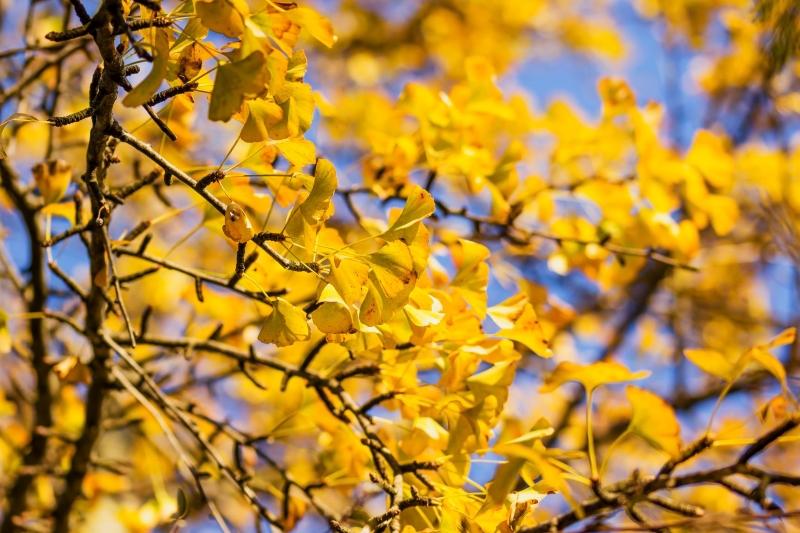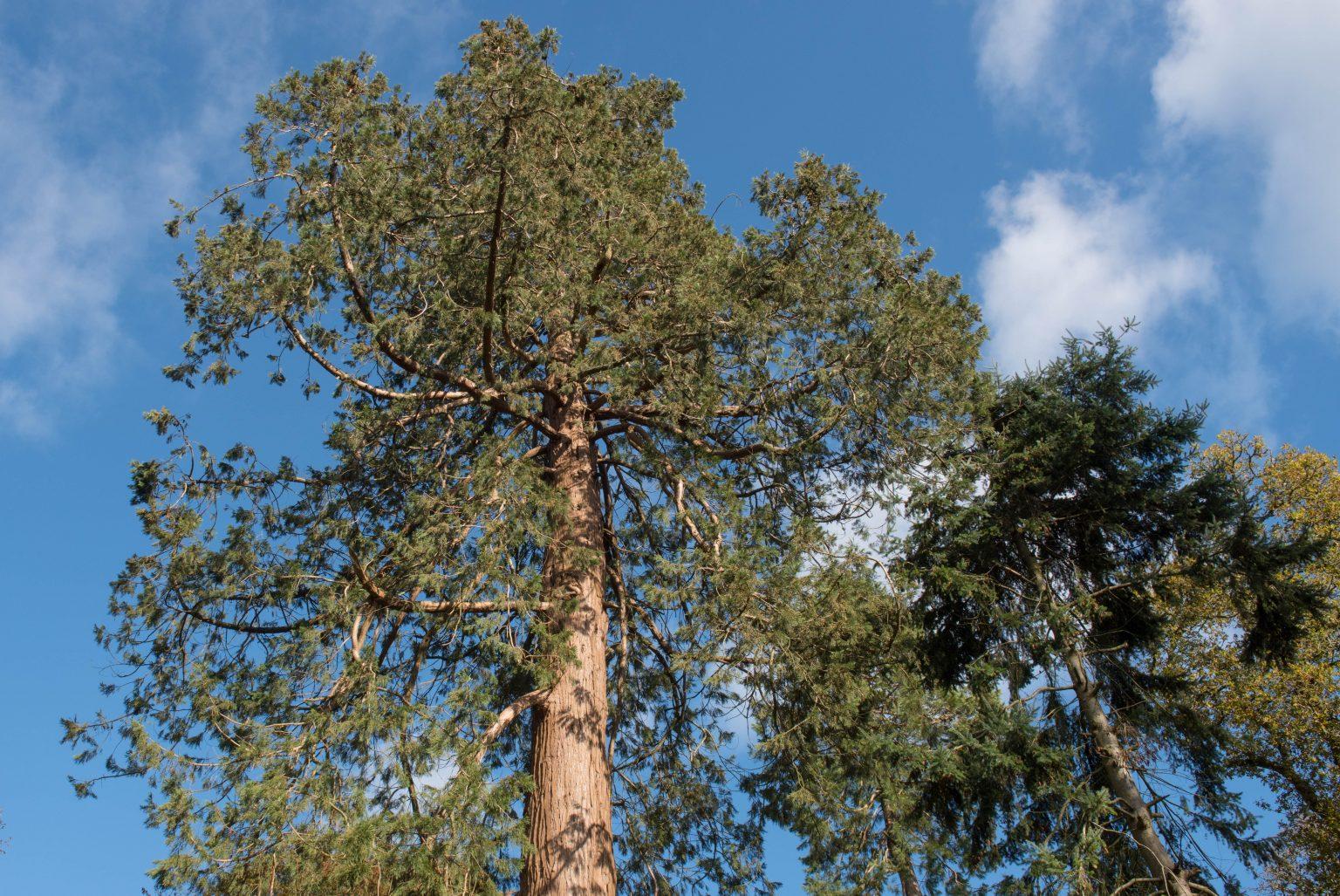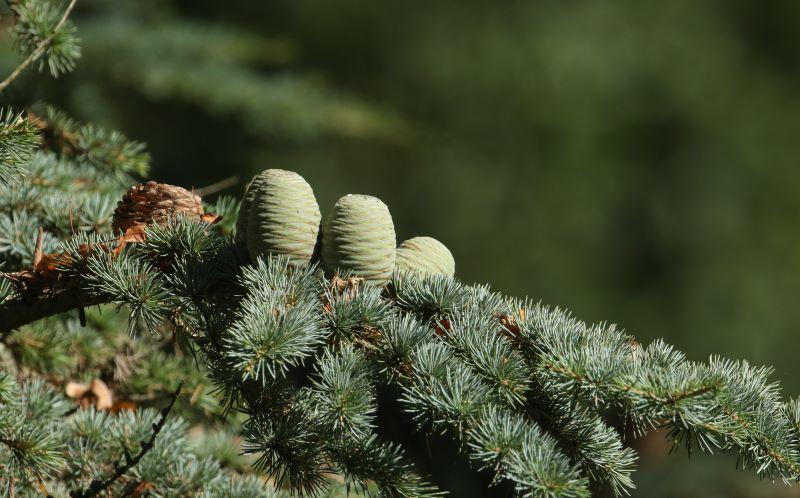
Conifers in the Arboretum
The Forest is a native broadleaf woodland, but in one corner you will find a special collection of conifers. As the spectacular tints of autumn in the Heart of England Forest Arboretum begin to fade and the hours of darkness increase, the conifer species come into their own. But as well as adding interest to a winter wander, these living fossils tell us much about resilience in climate change.
Gingko biloba
Also called the maidenhair tree, this species is believed to have existed since the time of the dinosaurs and is a living fossil. The unusual fan-shaped leaves resemble the maidenhair fern, hence its more common name. The tree survived by being cultivated in temple and palace gardens in China and its generic name Gingko derives from the Chinese for silver fruit.
Although at first glance it does not look like a conifer, gingko trees share the same biology. The gingko’s seeds are not protected by an ovary wall like most angiosperms (angiosperms are typically broadleaf species), so morphologically it is considered a gymnosperm (gymnosperms are typically conifer species).
It was introduced to Europe early in the 18th Century and has been extensively planted in the USA as a street tree. As well as its spectacular leaves in autumn, its hard fruit is of note and roasted and eaten in Japan as a hangover cure.

Wellingtonia or Giant Redwood
This species was formally identified in America in 1852 and then found its way to many large estates in Britain, including the Duke of Wellington’s estate in Hampshire where this conifer species was first planted in 1857. It was named after “the Iron Duke” who died that year.
In its native California, the tree has been known to live for up to 3400 years and for a while was thought to be the oldest known living tree. Its bark is very thick which allows the tree some protection from forest fires – its spongy bark is fire resistant as it does not contain resin. Even when the tree falls to the ground it will lie there for many years as it decays hardly at all.
Because of its size it is known in the USA by several names such as the mammoth tree and the giant sequoia. Although it is not the largest growing redwood species, that is the coast redwood.

Cedar of Lebanon
This is a tree with significant religious associations. In biblical times the hard and enduring wood was used extensively in the building of temples and palaces. So many cedars were felled for the construction of the Temple of Jerusalem and Solomon’s Palace that the surrounding landscape became a desert. Felling the tree is restricted to a relatively small area on Mount Lebanon, where it is now preserved.
It was introduced to Britain as an ornamental tree in 1638 and widely used by the landscape gardener Capability Brown. He planted it in many of the estates he redesigned, and it is a familiar sight in numerous parks and large gardens. The tree is slow growing and long lived as its wood is dense and strong and is also sweetly scented. Its wood is often used to line clothes drawers as it is resistant to insects.

European Larch
A more familiar sight is probably the European larch which is commonly used for timber in British forestry. This tree is a deciduous conifer, meaning it loses its needles over the winter months, the same as most broadleaf species. As pests and disease have become more prevalent in the UK over the last few decades, due to rising temperatures and the import of timber and trees, larch species have shown they are very susceptible to Phytophthora ramorum (known to cause the disease sudden oak death).
Between 1740 and 1830 three successive Dukes of Atholl planted more than 14 million larches on their estates in Perthshire. Until then it had been grown largely as an ornamental tree. Its high quality timber with its rust coloured heartwood is used to make staircases, light furniture and wall paneling.
It has a longer growing season in Britain than in Europe and grows quickly in dry areas. In addition to sudden oak death it is vulnerable to spring frosts and larch canker. It needs plenty of light and space in which to flourish so where it is thinned out it allows grass and brambles to grow beneath it providing food for sheep in upland areas.

Monkey puzzle tree
The monkey puzzle tree, or Chile pine, became known to Europeans in the 17th Century when the Spaniards needed timber to build and repair their ships while they were exploiting the treasures of South America. The tree’s scientific name is derived from the Araucanian Indians who inhabited the area of southern Argentina and Chile where it was found. Its more common name supposedly derives from the task of climbing the tree with its sharp, close-set leaves, which would puzzle even a monkey. The native Indians ate the seeds either fresh or boiled.
The tree was introduced to Britain in 1795 by Archibald Menzies who planted seeds on the ship Discovery on which he was travelling as a botanist. They seldom live longer than 100 years and the timber is too knotty to be of commercial use.

Conifers and climate change
Conifers can also be found within the Forest at Coughton Park, Spernal Park and Morgrove Coppice. All the conifer species in the Forest have been around for a very long time – millions of years in some cases. They have lived through extremes of temperature in ice ages and warmer periods, when the earth was going through a significant change in climate, yet they are still here now physiologically unchanged. Who knows which will be the most resilient trees in a hundred years’ time with the current climate crisis?



